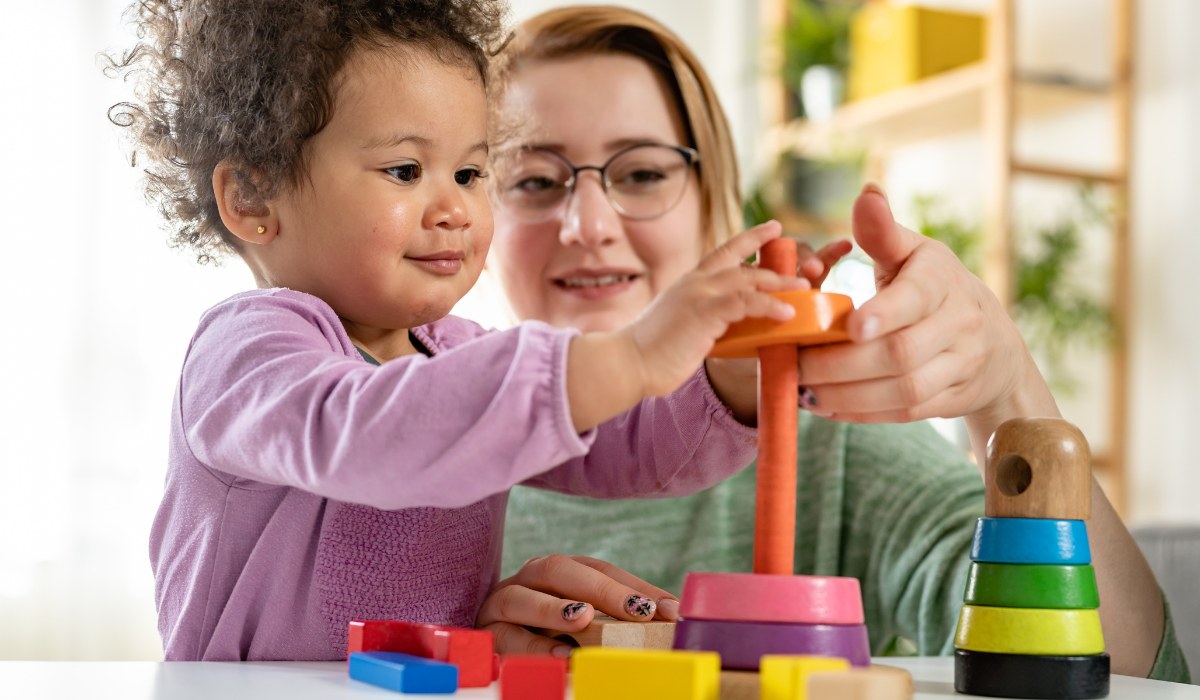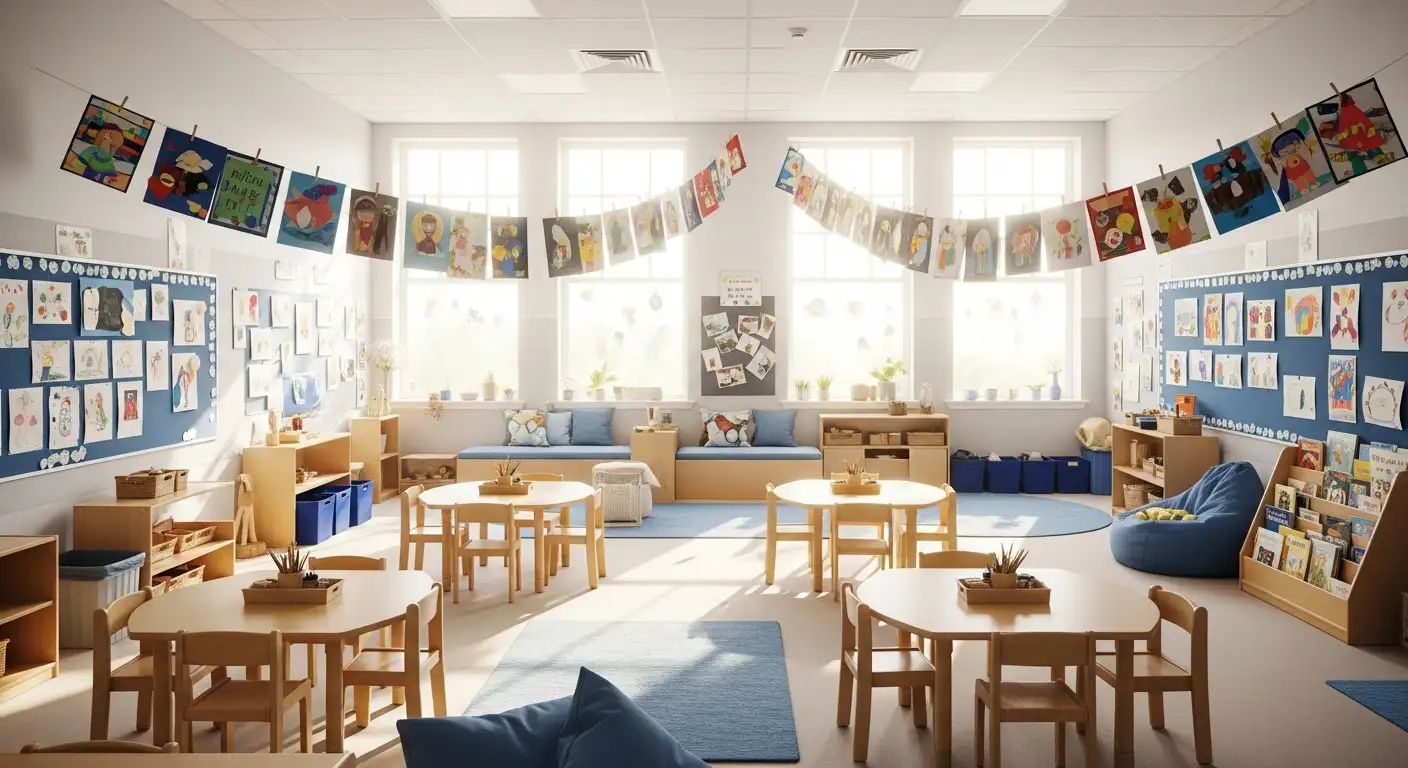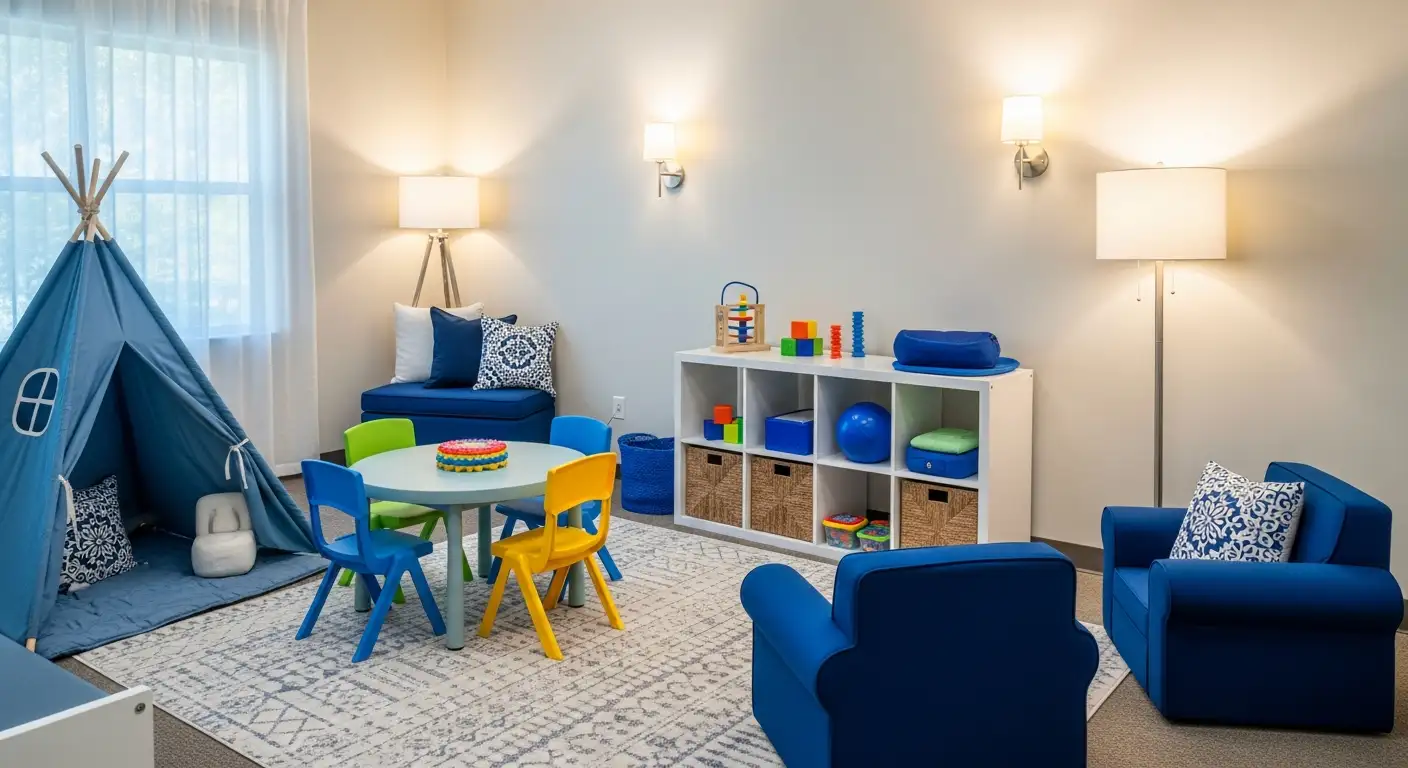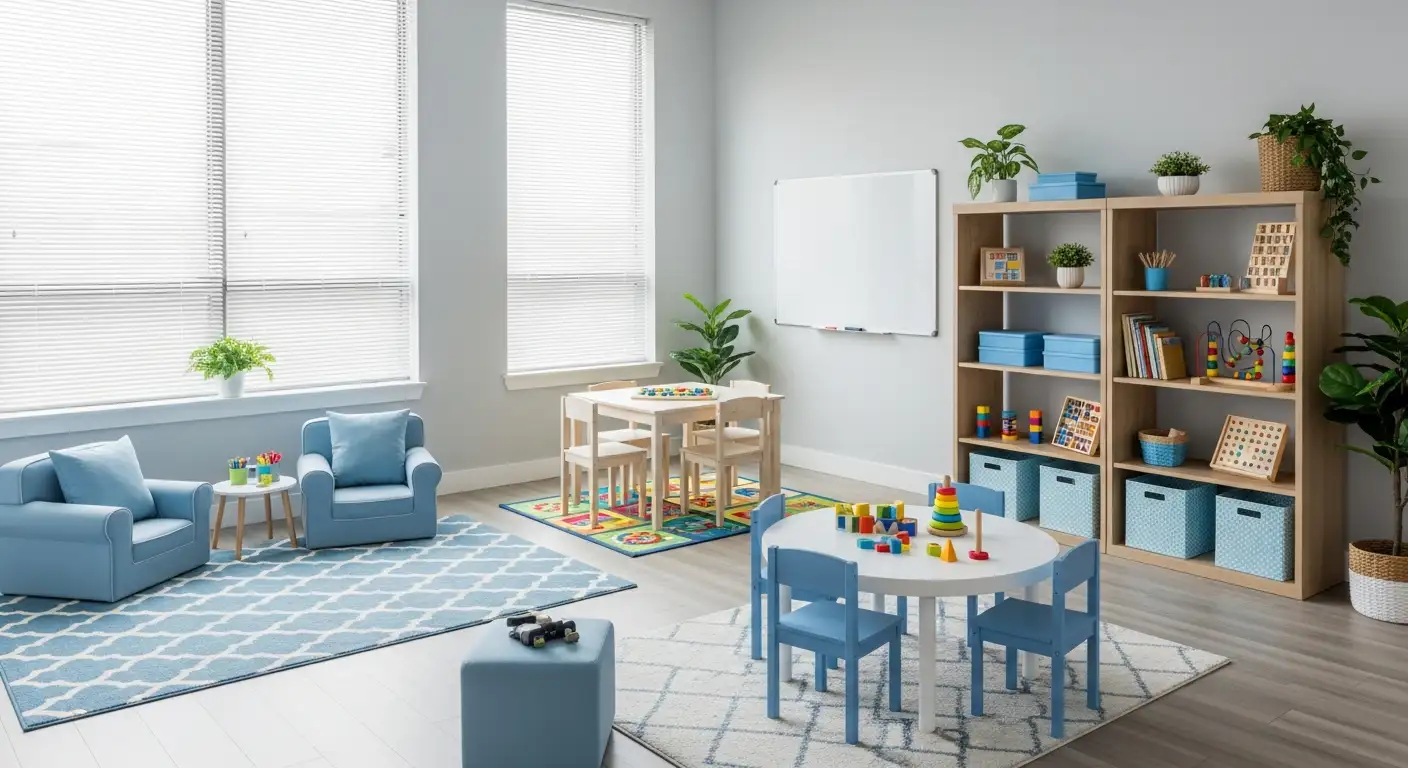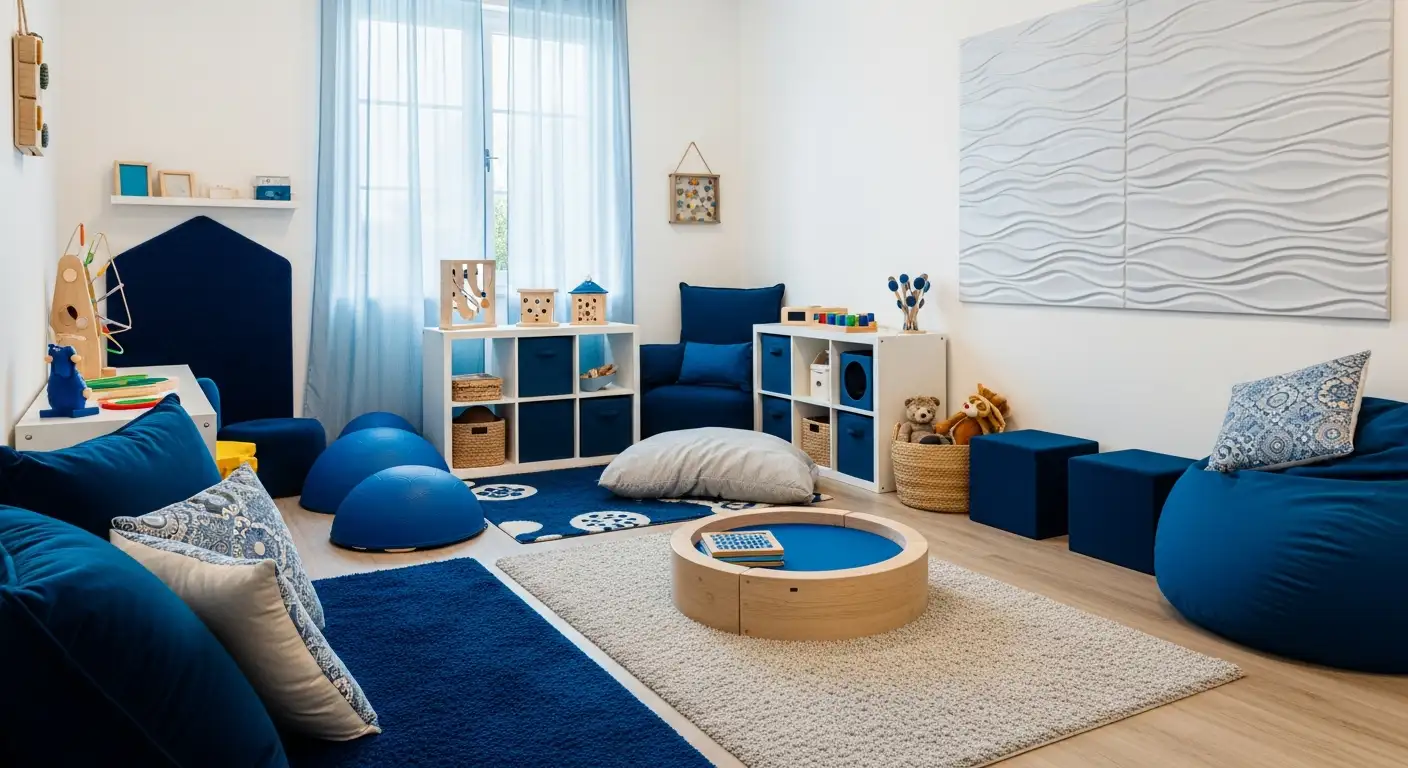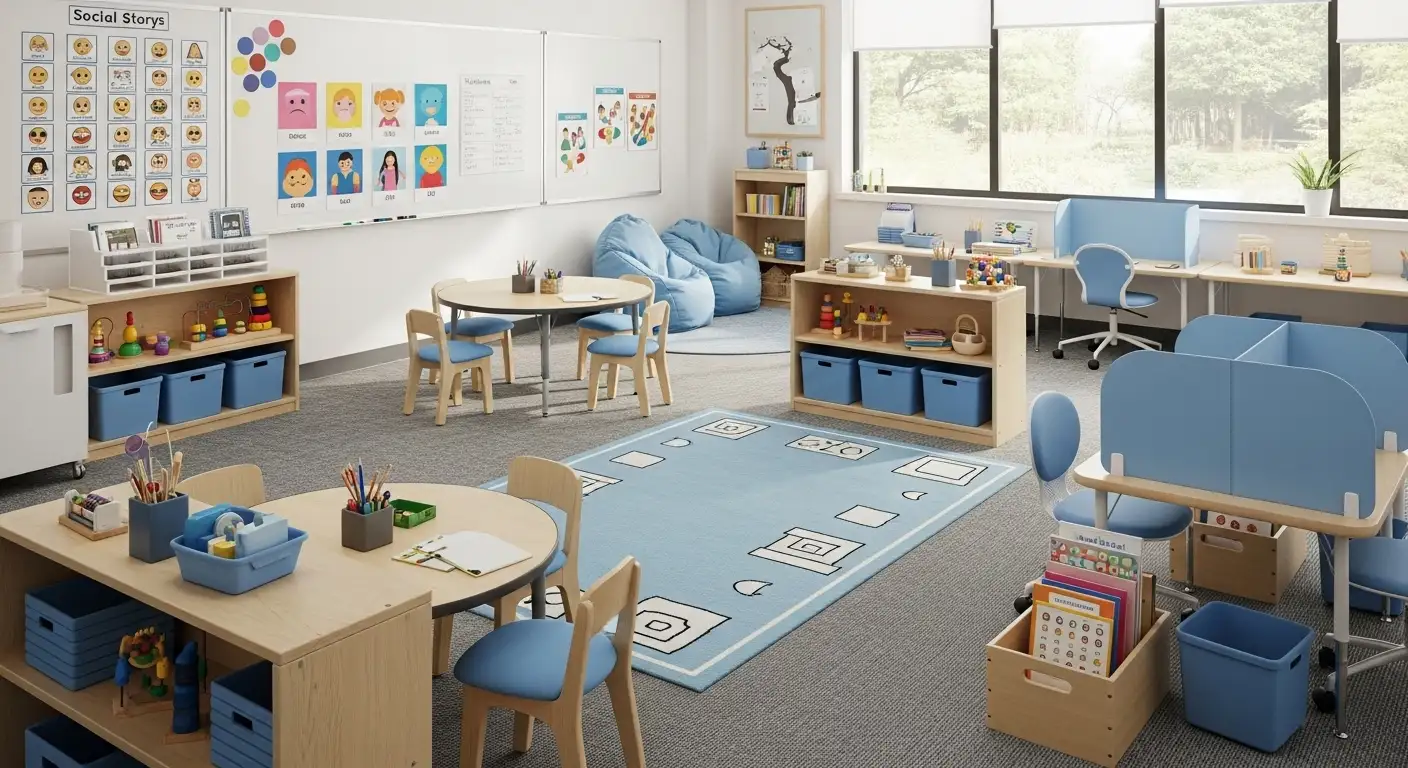Supporting Autistic Children in Developing Play Skills
Innovative Approaches to Enhancing Play Skills in Children with Autism
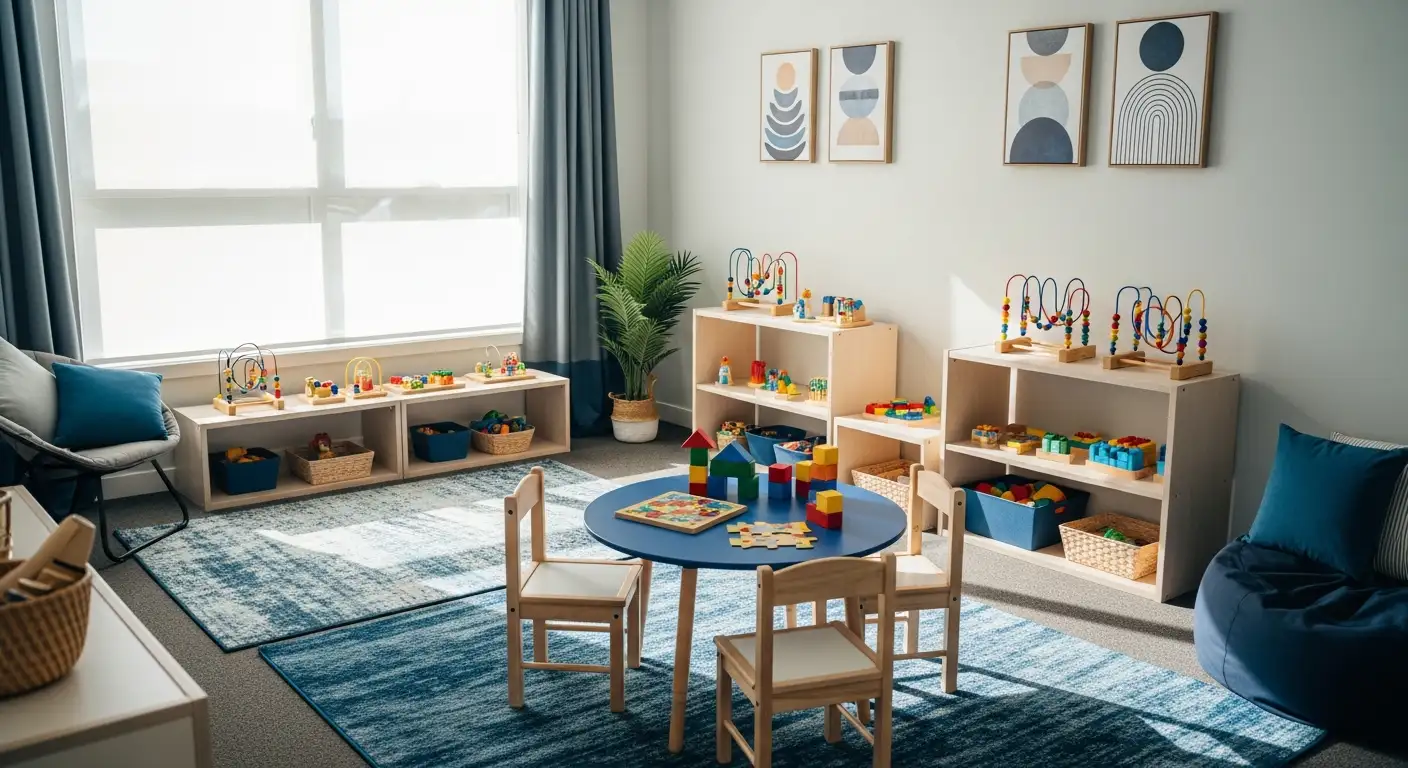
Understanding the Role of Play in Autism Intervention
Play is more than just a pastime for children with autism spectrum disorder (ASD); it is a crucial avenue for developing essential social, cognitive, and emotional skills. Effective therapies harness play to foster communication, interaction, and behavioral improvements, supporting each child's unique growth journey. This article explores the pivotal role of specialized interventions, particularly Applied Behavior Analysis (ABA) and other play-centered therapies, in nurturing play skills among children with autism.
What is Applied Behavior Analysis (ABA) Therapy?
Definition of ABA Therapy
Applied Behavior Analysis (ABA) therapy is a scientific, evidence-based method aimed at understanding and changing behavior through structured interventions. It relies on learning principles to increase positive behaviors and reduce harmful or hindering actions, making it highly effective for children with autism spectrum disorder (ASD).
Core Principles of ABA
ABA uses foundational concepts like positive reinforcement—rewarding desired behaviors to encourage their recurrence—and the A-B-C model, which analyzes Antecedents, Behaviors, and Consequences. This approach helps therapists customize strategies to suit each child's unique behavioral needs.
Techniques Used in ABA
Some common ABA techniques include Discrete Trial Training (DTT), natural environment teaching (NET), prompting, and video modeling. These methods break skills into manageable steps, use prompts to guide correct responses, and apply immediate reinforcement to solidify learning.
Role of BCBAs in ABA Programs
Board-Certified Behavior Analysts (BCBAs) design individualized ABA programs after thorough assessments. They also oversee the therapy implementation by trained therapists or behavior technicians, ensuring the interventions target the child's specific needs effectively.
Targeted Skills in ABA Therapy
ABA focuses on enhancing a broad range of skills such as communication, social interaction, self-care, play abilities, motor skills, and academics. The therapy also addresses challenging behaviors by teaching replacement skills to foster independence.
Evidence Basis for ABA
ABA is backed by over 20 studies showing improvements in intellectual functioning, language, social skills, and daily living for children undergoing intensive, long-term programs. Major authorities like the US Surgeon General and American Psychological Association recognize ABA as a best-practice treatment for autism.
How ABA Therapy Supports Play Skill Development in Autism
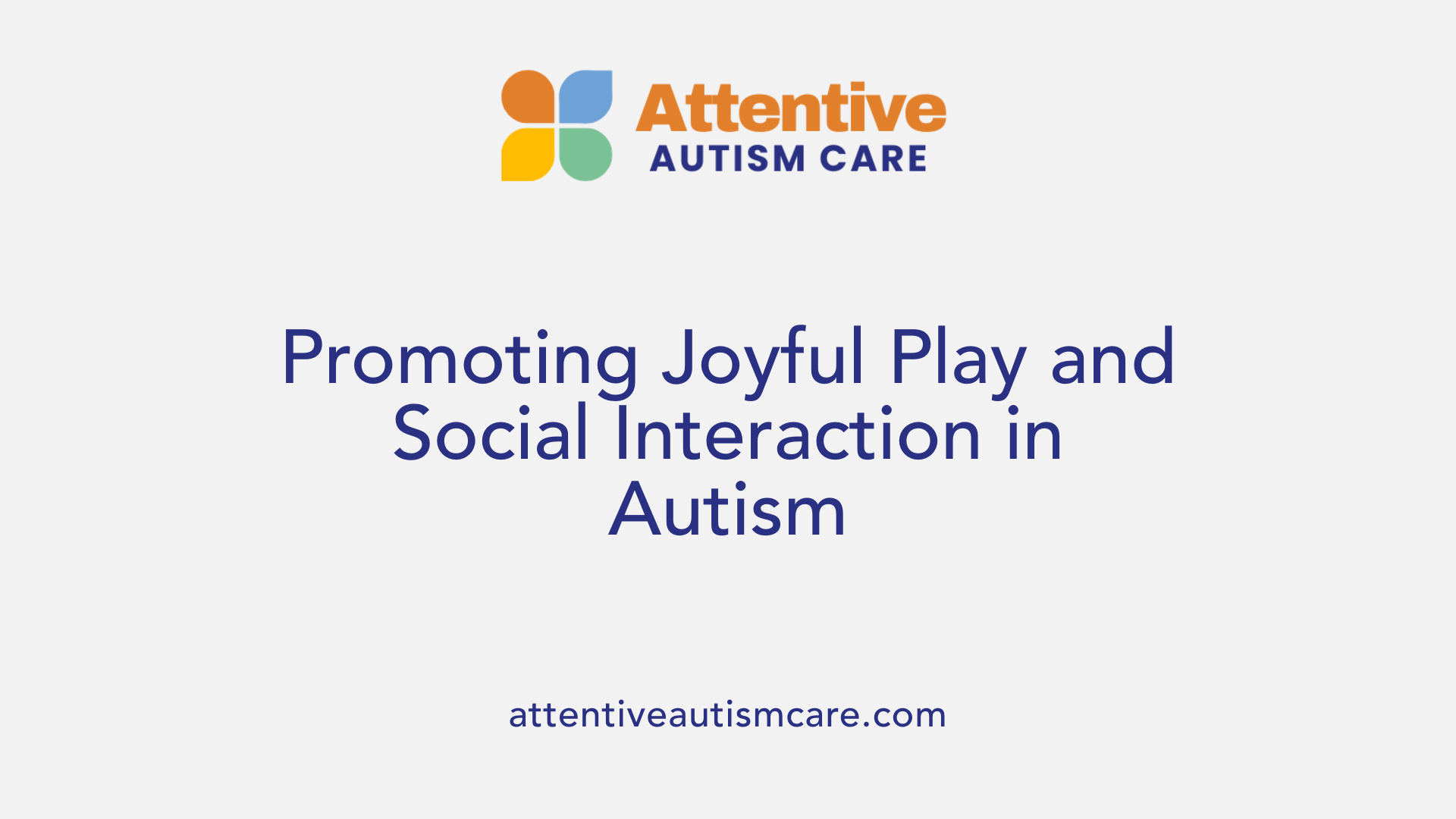
ABA methods to teach and enhance play
Applied Behavior Analysis (ABA) therapy focuses on breaking down play skills into manageable parts and teaching them through structured and supportive approaches. Techniques like prompting and positive reinforcement encourage children to engage in play activities and learn new skills step-by-step. This individualized method helps children gradually build abilities such as imitation, turn-taking, sharing, and cooperative play.
Use of positive reinforcement and prompting in play
In ABA, positive reinforcement rewards children for demonstrating desired play behaviors, increasing the likelihood of their recurrence. Prompts guide children when they need assistance during play, which are then gradually reduced to promote independence. For example, a child might receive praise or a small reward for initiating play or sharing toys, helping to replace problematic behaviors with positive expressions.
Improving social interaction and communication through ABA
ABA supports social skills by teaching eye contact, joint attention, and reciprocal communication during play. Structured exercises, including role-playing and social stories, help children practice conversations and social cues. Verbal and non-verbal communication like gestures and facial expressions are also targeted, sometimes with augmentative tools like Picture Exchange Communication System (PECS) or AAC devices.
Reducing problematic play behaviors
Problematic behaviors such as aggression or attention difficulties that interfere with play are addressed in ABA by identifying their antecedents and modifying the environment or responses. Children learn alternative, non-injurious ways of expressing themselves during play, which supports safer and more productive social engagement.
Techniques like Discrete Trial Training and Natural Environment Teaching
Discrete Trial Training (DTT) provides structured learning with clear instructions and immediate feedback, ideal for teaching specific play skills. Natural Environment Teaching (NET) uses everyday settings to practice and generalize those skills, making learning more relevant and functional. Both techniques complement each other to promote effective play learning.
Role of play-based ABA programs like PRT and ESDM
Play-based ABA programs such as Pivotal Response Treatment (PRT) emphasize motivation and initiation in play, working in clinical and home environments. The Early Start Denver Model (ESDM) integrates play and routine activities to improve social, language, and cognitive skills in young children. These approaches foster broader improvements in play, communication, and social interaction by integrating fun, interest-driven activities into therapy.
ABA therapy helps individuals with autism by improving their communication, social skills, and adaptive behaviors through these evidence-based strategies. The personalized, intensive nature of ABA, combined with play-focused methods, supports children in becoming more socially engaged and independent, enhancing their quality of life.
The Multidisciplinary Team Behind ABA Therapy
Roles of Board Certified Behavior Analysts (BCBAs)
BCBAs are highly trained professionals with advanced degrees who design and supervise ABA therapy programs. They conduct detailed assessments to understand each child’s unique challenges and strengths. BCBAs develop individualized treatment plans, select appropriate behavioral targets, and continually analyze progress. Importantly, they train and support caregivers and other team members to ensure consistent therapy implementation.
Responsibilities of Registered Behavior Technicians (RBTs)
RBTs are trained technicians who provide direct ABA therapy under BCBA supervision. They implement the specific strategies and interventions designed by BCBAs, work closely with children, collect data on behaviors, and help reinforce desired skills. RBTs tailor their interactions to each child's preferences and needs, creating a supportive and engaging learning environment.
Supervision and Training in ABA Programs
Supervision is a critical aspect of ABA therapy to maintain quality and effectiveness. BCBAs regularly observe RBTs during sessions, provide ongoing training, and adjust therapy plans based on progress data. This ensures that interventions remain individualized and responsive to the child’s evolving requirements.
Collaboration with Families and Educators
Successful ABA therapy involves strong partnerships with families and educators. BCBAs and RBTs communicate with parents and teachers to align goals and strategies across home, school, and clinical settings. They also train caregivers in ABA techniques, enabling skills practice beyond therapy sessions and promoting generalization of learned behaviors.
Settings Where ABA is Delivered
ABA therapy is versatile and can be delivered in various locations, including the child’s home, schools, and specialized clinics. Each setting offers unique opportunities: home provides a familiar environment for generalization, schools allow integration with peers and academic goals, and clinics offer structured, resource-rich spaces for intensive intervention.
Overall, ABA therapy is a team effort involving skilled professionals working collaboratively with families and educators to provide personalized, evidence-based support for children with autism.
Play Therapy Modalities Enhancing Autism Interventions
Overview of Different Play Therapy Approaches
Play therapy for children with autism encompasses a variety of modalities designed to promote engagement, self-expression, and social skill development. Among the commonly used approaches are sensory integration therapy, child-centered play therapy, and floor time play therapy, each tailored to children’s unique needs and interests.
Sensory Integration Therapy Benefits
Sensory integration therapy aims to support children in processing sensory information effectively. By incorporating activities that target sensory modulation, this therapy helps reduce sensory-related behavioral challenges and fosters developmental progress through play.
Child-Centered and Floor Time Play Therapy
Child-centered play therapy focuses on allowing children to lead play sessions, encouraging expression and emotional release in a safe environment. Floor time therapy, a social-relational intervention, emphasizes following the child's lead while promoting social interaction and emotional connection through playful engagement.
Incorporating Developmental and Social-Relational Methods
Developmental therapies such as the Early Start Denver Model (ESDM) blend play with social interaction to boost language and social skills. Social-relational methods like DIR/Floor Time and Relationship Development Intervention (RDI) aim to enhance emotional bonds and communication, using play as the foundation for these improvements.
Use of Play for Self-Expression and Behavioral Improvements
Play therapy facilitates the replacement of undesired or harmful behaviors with safe, expressive ones by using toys and activities that resonate with the child’s interests. This strategy aids in self-expression and serves as a medium to address core autism symptoms and behavioral challenges such as attention deficits and aggression.
Therapeutic Goals in Non-ABA Play Therapies
While ABA focuses specifically on behavior modification, other play therapies prioritize enhancing emotional connection, sensory integration, communication, and social interaction. These therapies work hand-in-hand with ABA in comprehensive intervention plans to nurture a child's overall development through joyful, interest-driven activities.
Neuroplasticity and Play: How Play Therapy Shapes the Autism Brain

Impact of Play Therapy on Brain Functions
Play therapy engages children with autism in enjoyable and meaningful activities, which do more than just entertain—they actively promote brain development. By participating in play, children stimulate regions of the brain associated with cognition, emotion, and social interaction, facilitating healthier and more functional neural activity.
Neuroplasticity and Modification of Neural Circuits
One of the remarkable effects play therapy has is its ability to harness neuroplasticity—the brain's capacity to reorganize itself by forming new neural connections. Through repetitive and interest-driven play, children with autism experience modification of their neural circuits. These changes support improvements in areas related to learning, emotional regulation, and social skills, which can otherwise be challenging.
Benefits for Cognition, Emotion, and Social Skills
Engaging regularly in play therapy enables children to better process emotions, enhance communication abilities, and develop more adaptive social behaviors. This is because play provides a safe environment where children learn to express themselves without fear, thus fostering emotional growth. Additionally, through structured play activities, children learn problem-solving and social interaction, essential cognitive and emotional elements.
Scientific Insights Linking Play to Developmental Improvements
Research underlines that play therapy is not just a behavioral intervention but a catalyst for tangible brain development. Its ability to induce neuroplastic changes translates into improved outcomes in core autism symptoms, including communication and social deficits. Scientific studies confirm that integrating play therapy as part of a comprehensive treatment plan encourages meaningful developmental progress across multiple domains.
Comprehensive Early Interventions: Early Start Denver Model (ESDM) and Pivotal Response Treatment (PRT)

What is the Early Start Denver Model (ESDM)?
ESDM is an early intervention designed for children aged 1 to 4 years, blending play and routine interactions to boost social, emotional, cognitive, and language skills. This therapy combines developmental and behavioral approaches, including applied behavior analysis (ABA) principles, making learning enjoyable and natural within the child's daily environment.
How does Pivotal Response Treatment (PRT) work?
PRT is a play-based form of ABA that emphasizes pivotal behaviors such as motivation and initiation of communication. It uses child-led activities and natural reinforcements to encourage broader improvements in social, communication, and academic skills.
Why is family involvement important and how are home settings used?
Both ESDM and PRT rely heavily on family participation. Parents and caregivers are trained to apply therapy techniques during everyday activities, ensuring consistency and reinforcing skills beyond clinical sessions. This approach helps integrate therapy seamlessly into the child’s life.
What research supports the effectiveness of ESDM and PRT?
Extensive research shows positive outcomes for children receiving ESDM and PRT, including enhanced language abilities, social functioning, and decreased autism symptoms. ESDM's evidence base is particularly strong due to comprehensive clinical trials, while PRT's motivational focus has demonstrated broad skill gains.
How do ESDM and PRT integrate ABA principles?
Both therapies utilize ABA concepts such as reinforcement, prompting, and task analysis but deliver them through play-focused, natural interactions. This blend supports learning while respecting each child’s interests and pace.
| Intervention | Age Range | Approach | Family Role | Research Evidence |
|---|---|---|---|---|
| ESDM | 1-4 years | Play-based with ABA | High involvement; home and clinic | Strong clinical trial support |
| PRT | Preschool to school-age | Play-based, motivation-driven ABA | Active parent participation | Positive broad skill improvements |
Building Social Skills Through Play and ABA Strategies
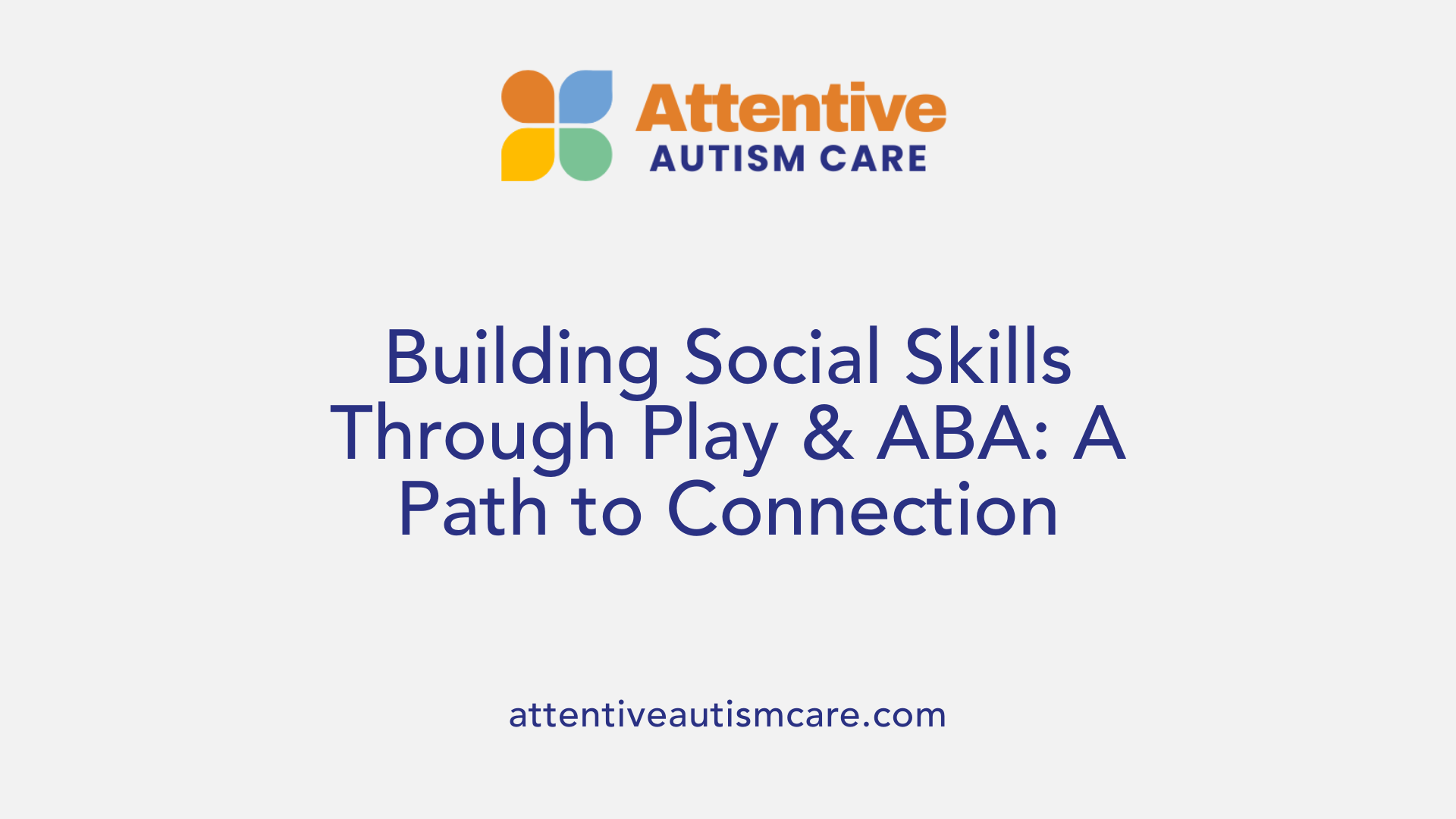
Teaching Eye Contact and Joint Attention
One foundational social skill taught through ABA therapy is eye contact and joint attention. Structured exercises paired with positive reinforcement help children with autism learn to focus on others' faces and share attention on objects or activities, which are crucial steps for meaningful interactions.
Encouraging Turn-Taking and Reciprocal Conversations
ABA methods promote turn-taking and reciprocal communication through interactive techniques such as role-playing and the use of social stories. These approaches help children practice the flow of conversations, improving their ability to respond and engage with peers.
Using Role-Playing, Social Stories, and Visual Supports
Role-playing allows children to simulate social situations in a controlled environment, enhancing their understanding of social cues. Social stories and visual supports further aid comprehension by breaking down expected behaviors and responses into clear, manageable steps.
Developing Emotional Intelligence and Empathy
Through targeted identification exercises and response training, ABA therapy encourages children to recognize emotions in themselves and others. This emotional awareness fosters empathy and supports emotional regulation, key components in building positive relationships.
Practicing Cooperative Play and Group Participation
Play therapy integrated with ABA strategies teaches cooperative play skills such as sharing and initiating interactions. Children learn to participate in group activities, which enhances their ability to navigate social settings and build friendships.
Parents and therapists often reinforce these skills outside therapy sessions using structured playdates, visual cues, and positive reinforcement to ensure consistent social development behaviors.
| Social Skill Focus | Techniques Used | Purpose and Benefits |
|---|---|---|
| Eye Contact & Joint Attention | Structured exercises, reinforcement | Establishes foundational interaction skills |
| Turn-Taking & Conversation | Role-playing, social stories | Enhances reciprocal communication |
| Role-Playing & Visual Aids | Social stories, visual supports | Clarifies social expectations and responses |
| Emotional Intelligence | Emotion identification, response training | Builds empathy and emotional understanding |
| Cooperative Play | ABA-integrated play therapy | Facilitates group participation and social bonding |
Parental and Caregiver Involvement in Supporting Play Development
Training Parents in ABA Principles
Parents and caregivers play a vital role in reinforcing the skills children with autism learn through therapy. Specialists often provide training in applied behavior analysis (ABA) principles, empowering families to continue therapeutic techniques at home. This training includes how to break down tasks, use prompts effectively, and apply positive reinforcement to encourage desired behaviors during daily routines and play.
Role of Caregivers in Reinforcing Skills at Home
Caregivers reinforce social and play skills outside formal sessions by engaging children in activities that integrate learned behaviors. By maintaining an encouraging environment, they help children generalize skills across settings. This involvement improves consistency and supports the child's ability to apply new skills in various situations.
Structured Playdates and Behavior Modeling
Organizing structured playdates enables children to practice social interactions like turn-taking and sharing in a safe, enjoyable context. Caregivers model appropriate behaviors during these interactions, helping children understand social cues and responses. This hands-on approach enhances social communication and peer relationships.
Use of Visual Supports and Positive Reinforcement at Home
Visual supports such as social stories and visual schedules assist children in anticipating activities and understanding expectations. Positive reinforcement methods, including praise and rewards, motivate children to engage in desired behaviors consistently. These tools are essential for creating a supportive home environment conducive to learning and growth.
Ensuring Consistency and Generalization Across Environments
Consistency between therapy sessions and home practices is crucial for skill generalization. Caregivers coordinate with therapists to align strategies and share progress. This collaboration ensures that children experience similar expectations and supports across environments, facilitating smoother development and adaptation.
Engaging parents and caregivers actively in these ways maximizes the benefits of play and ABA therapies, ultimately helping children with autism develop vital social, communication, and play skills.
Integrating Occupational Therapy and Behavioral Interventions to Support Play
Sensory integration approaches in occupational therapy
Occupational therapy (OT) uses sensory integration techniques to help children with autism manage sensory processing challenges. This approach supports the child's ability to engage in play by addressing difficulties with touch, movement, or sensory sensitivity. Sensory integration therapy creates a more comfortable and responsive environment, enabling children to explore play activities more freely.
Collaboration between occupational therapists and behavioral specialists
Collaboration between occupational therapists and behavioral specialists, such as Applied Behavior Analysis (ABA) providers, enhances the effectiveness of therapy for children with autism. While OT focuses on improving sensory and motor skills needed for play, behavioral specialists teach social and communication skills. Together, they develop personalized plans to foster a child’s ability to interact, express themselves, and participate meaningfully in play.
Enhancing daily living skills alongside play
Integrated interventions not only promote play but also support daily living skills. Occupational therapy helps develop self-care and motor skills, which are often targeted in ABA programs. Through this combined effort, children gain practical abilities alongside improved social and communication skills, allowing for greater independence and confidence both in play and everyday routines.
Addressing sensory processing deficits to improve engagement
Sensory processing deficits can interfere with a child’s interest and participation in play. Occupational therapy aims to reduce these barriers, making play activities more accessible and enjoyable. By adapting the environment or providing appropriate sensory input, therapists enable children to better regulate emotions and behaviors, which supports ongoing engagement and skill development.
Comprehensive approaches for better developmental outcomes
A comprehensive strategy that integrates occupational therapy’s sensory integration methods with ABA's structured behavioral techniques provides a holistic solution. This dual approach tackles core autism symptoms and related challenges more effectively, promoting neuroplasticity and improving cognition, emotion, social interaction, and daily functioning. Early and individualized integration of these therapies leads to better long-term developmental outcomes for children with autism.
Advancing Play Skills for a Brighter Future
Supporting play development in children with autism requires a multifaceted approach grounded in evidence-based therapies like ABA and complemented by specialized play and occupational therapies. Early, personalized interventions delivered by skilled multidisciplinary teams empower children to build essential social, communication, and emotional skills in engaging, meaningful ways. Active caregiver involvement further strengthens these efforts, ensuring progress extends beyond clinical settings into daily life. Through these collaborative endeavours, children with autism gain greater independence, improved quality of life, and the foundation to thrive socially and emotionally.
References
- Play therapy in children with autism: Its role, implications, and ...
- Applied Behavior Analysis (ABA)
- Treatment and Intervention for Autism Spectrum Disorder
- Behavioral Therapy for Autism Spectrum Disorder in Children
- Applied Behavior Analysis in Children and Youth with Autism ...
- ABA Therapy for Enhancing Social Skills in Children with Autism
- Applied Behavior Analysis (ABA)











